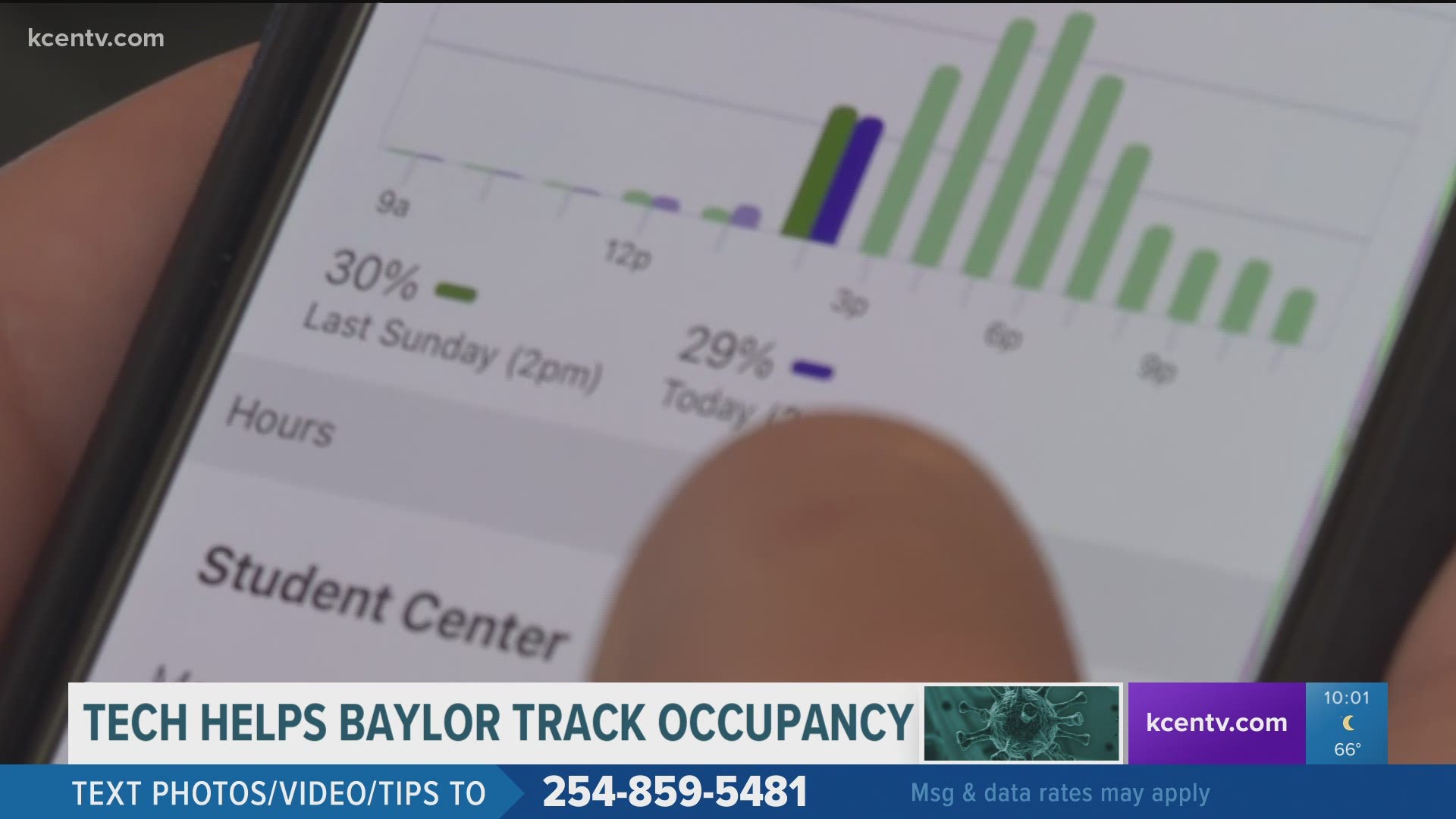WACO, Texas — Students at Baylor University no longer have to worry about long waits in packed areas. The school has been using a new technology called Occuspace since September 2020.
The device plugs into a wall outlet in a building such as a library and reads different Wi-Fi and Bluetooth signals in the area to determine how many people are occupying that space. The information from those readings are relayed to a mobile app that tells students the wait time for a building, how crowded it is and reads patterns to determine busy hours.
David Burns is the associate vice president of Library and Academic Technology Services for the college. He says it has been a great asset to have.
“It’s been a service to students because they’re able to check sorta the occupancy level at the library and how busy the library is at any given time before they even decide if they wanna come visit us,” he said.
Baylor currently uses 45 different sensors with one to two zones per floor that covers six different floors in the library. This tech is also used in dining halls and student centers.
The idea for this technology came from Nic Halverson when he was a student at UC San Diego. He was studying in a library one night and wished he had known how busy the space would have been before coming.
“We developed this solution and launched an app just at UCSD and on the first day we had about 5,700 students download with just a Facebook post,” Halverson said. ”That’s when I thought maybe I’m not the only impatient person on campus.”
His product is now in nearly 20 major universities and will be in even more Texas schools by the end of the year. He said this product was created before social distancing was ever a thing, but the pandemic has changed how people have used it.
“It was really just something based out of convenience and then when COVID hit it really became something that had a health and safety impact. People didn’t want to go to places if they knew it was going to be crowded. [With] Our data, it was really easy to come into this space, help visitors feel more safe.”
That aspect of the technology has been especially used at Baylor.
“It’s been a really good choice for us, and I think it’s helped us, maintain safety and provide a sense of safety to the students who are using the space in a challenging time,” Burns said.
Burns says that they’ll consider keeping the technology around even after the current COVID-19 pandemic ends as it is useful for students and how they can be efficient.

